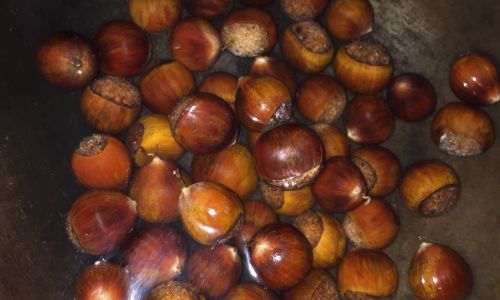Milk is a staple in households worldwide, serving as a nutritional powerhouse and a versatile ingredient in countless recipes. However, its perishable nature demands careful storage practices to ensure safety, preserve taste, and minimize waste. This article explores science-backed methods for storing milk, covering refrigeration, freezing, handling open containers, and identifying spoilage signs. By adhering to these guidelines, consumers can extend milk’s shelf life, safeguard their health, and reduce food waste.
Understanding Milk’s Composition and Perishability
Milk is a rich source of proteins, fats, lactose, vitamins, and minerals. However, its high water content and neutral pH make it an ideal breeding ground for microorganisms, including bacteria, molds, and yeasts. Pasteurization—a heat-treatment process—kills harmful pathogens like Escherichia coli, Salmonella, and Listeria monocytogenes, extending milk’s safety. Nevertheless, even pasteurized milk remains susceptible to spoilage organisms, which proliferate rapidly at temperatures above 40°F (4°C).
Refrigeration: The Cornerstone of Milk Storage
Proper refrigeration is non-negotiable for milk preservation. Follow these steps to maximize freshness:
-
Temperature Control:
Set your refrigerator to 35–40°F (2–4°C). Use a thermometer to verify accuracy, as fluctuating temperatures accelerate bacterial growth. Avoid storing milk in the refrigerator door, where temperature fluctuations occur due to frequent opening. Instead, place it on the middle or lower shelf, where temperatures remain most stable. -
Container Selection:
Transfer milk to opaque, airtight containers if the original packaging is damaged. Clear glass or plastic bottles allow light exposure, which degrades riboflavin (vitamin B2) and promotes off-flavors. Ensure containers are clean and dry to prevent moisture-induced spoilage.
-
Sealing and Positioning:
Always seal milk containers tightly to prevent odor absorption from other foods. Store milk away from strong-smelling items like onions, garlic, or fish, as its porous structure absorbs odors easily. -
Shelf Life:
Unopened, pasteurized milk typically lasts until the “best by” date. Once opened, consume it within 5–7 days. Organic or lactose-free varieties may have slightly shorter shelf lives due to processing differences.
Freezing Milk: A Viable Long-Term Solution
Freezing is an excellent way to extend milk’s lifespan, though it alters texture slightly. Follow these steps for optimal results:
-
Pre-Freezing Preparation:
Pour milk into airtight, freezer-safe containers, leaving 1–1.5 inches (2.5–3.8 cm) of headspace to accommodate expansion. Avoid glass jars, as milk expands during freezing and may crack them.
-
Labeling and Dating:
Clearly label containers with the freezing date. Frozen milk retains quality for 3–6 months, though it’s safest to use it within 1–2 months for the best taste. -
Thawing Techniques:
Thaw milk in the refrigerator for 24–48 hours. Avoid thawing at room temperature or using a microwave, as uneven heating can compromise safety. Shake the container vigorously after thawing to redistribute separated fats and proteins. -
Usage After Thawing:
Thawed milk is ideal for cooking, baking, or consuming in recipes where texture changes are less noticeable. Avoid serving it cold, as freezing can impart a slightly grainy texture.
Shelf-Stable Milk: Storage and Handling
Ultra-high-temperature (UHT) pasteurized milk, packaged in aseptic cartons, requires no refrigeration until opened. Store unopened cartons in a cool, dry place away from direct sunlight. Once opened, treat UHT milk like regular refrigerated milk, consuming it within 7–10 days.

Handling Open Containers: Best Practices
-
Avoid Cross-Contamination:
Never return unused milk to the original container after contact with a spoon, cup, or cooking utensil. This introduces bacteria that accelerate spoilage. -
Pouring Techniques:
Use a clean pitcher or measuring cup to transfer milk, minimizing contact with external surfaces. -
Smaller Portions:
For households consuming milk slowly, divide it into smaller containers upon opening. This reduces exposure to air and bacteria.
Identifying Spoilage: When to Discard Milk
Spoiled milk exhibits clear signs of degradation:

- Sour Aroma: A sharp, unpleasant odor indicates bacterial activity.
- Lumps or Curdling: Proteins coagulate as milk spoils, creating a lumpy texture.
- Discoloration: Yellowish tints or dark spots suggest mold growth.
- Off-Taste: Spoiled milk tastes overly acidic or bitter.
Err on the side of caution: if any of these signs are present, discard the milk immediately.
Common Mistakes to Avoid
- Storing Milk in the Refrigerator Door:
Frequent temperature fluctuations in the door compromise freshness. - Overstocking the Fridge:
Overcrowding impedes airflow, leading to uneven cooling. - Ignoring Expiration Dates:
While pasteurized milk is safe past its “best by” date if properly stored, quality declines significantly. - Refreezing Thawed Milk:
Once thawed, milk’s texture becomes unstable; refreezing exacerbates this issue.
Benefits of Proper Milk Storage
- Health Safety: Reduces the risk of foodborne illnesses.
- Cost Efficiency: Minimizes waste by extending shelf life.
- Environmental Impact: Lowers carbon footprints by reducing discarded packaging and production demands.
- Flavor Preservation: Maintains milk’s natural sweetness and creaminess.
Special Considerations for Alternative Milks
Plant-based milks (e.g., almond, soy, oat) and lactose-free varieties require similar storage practices but may have shorter shelf lives due to added ingredients. Check labels for specific instructions, as some products contain preservatives that alter storage requirements.
Conclusion
Storing milk correctly is a simple yet critical practice for health-conscious households. By maintaining strict refrigeration, freezing when necessary, and adhering to hygiene protocols, consumers can enjoy milk’s nutritional benefits without compromising safety or quality. Regularly inspecting containers, adhering to expiration dates, and avoiding common pitfalls like improper thawing ensure that every drop of milk is used optimally. In a world where food sustainability is paramount, mastering these techniques is a small but impactful step toward reducing waste and promoting responsible consumption.
Final Tip: Invest in a quality refrigerator thermometer and prioritize milk storage in your weekly meal planning to maximize freshness and minimize surprises. Your taste buds—and your wallet—will thank you.







0 comments